Global Cities, World Cities
Global cities or world cities are global control centres and nodal points of the world economy. They serve as networks of co-ordination, control and global expertise, as command centres for TNC's (transnational firms), production sites of services. They are also centres of information processing and control, centres of information, and have an international standing also in cultural, art and political areas.
World cities like New York, Tokyo, London but also Los Angeles, Paris, Moscow, Seoul and Sao Paulo possess a spatial concentration of different global control activities and are driving forces of the world economy as global control-, command-, and management centres. They are the nodal points holding together the capitalist world economy. Global cities exist independently of the city site (Bronger 2004, Kraas 2007, Sassen 1991).
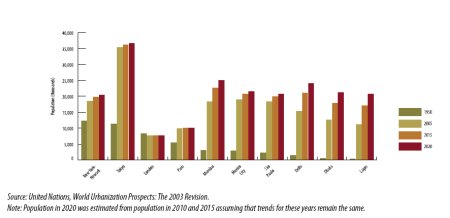
Source: UN-HABITAT
Seven features of a global city:
- base for command centres for transnational companies (TNC's)
- important financial centre
- centre of the rapid growth sector of enterprise-oriented services
- place of international institutions
- major nodal point of transport and traffic
- centre of industrial production
- city with major population
Most of the so-called global or world cities are located within the global triad (North America, Europe and Asia). Except for the "big four", most of the global cities have only partly global command functions and could therefore only restrictedly be called global cities. They have global functions in only some sectors of the economy or culture. Los Angeles, the film metropolis for example, owes its high-ranking primarily to its importance as one of the most significant airport and shipping traffic centres of the world (Bronger 2004).
The four world cities: New York, Paris, Tokyo and London
Literally, global cities or "command centers with international standing", "world cities with executive functions" are only the "big four": New York, Paris, Tokyo und London.
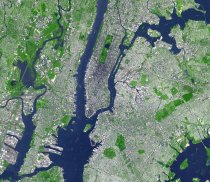
New York.
Source: NASA |
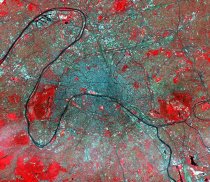
Paris.
Source: NASA Aster |
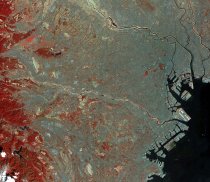
Tokyo.
Source: NASA Aster |
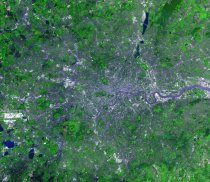
London.
Source: NASA |
These cities are key to globalisation. Global urban economies rely on advanced producer services such as finance, banking, insurance, law, management consultancy, advertising and other services. The technology revolution made these fast interconnections and communication possible.
Cities that have become hubs of global economic activity:
- Finance: Frankfurt, Hong Kong, Amsterdam, Singapore, Sao Paulo, Shanghai
- Transport: Dubai, Rotterdam
- Information technology: Bangalore, Seattle, Silicon Valley (UN-HABITAT 2001)
Task: Compare the growth of the four world cities New York, Paris, Tokyo and London with the other largest cities in the world with the help of the figure on the left. What are differences and similarities?
